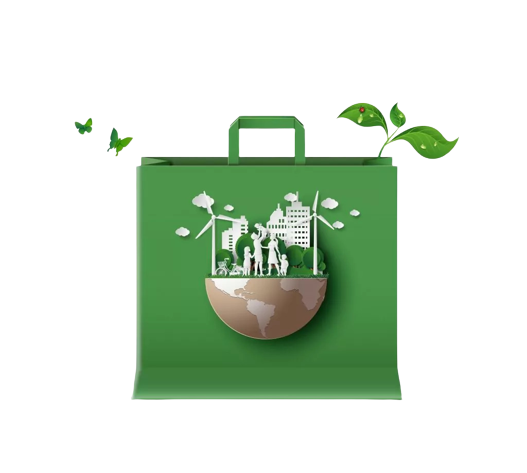Introduction
The food industry is always on the lookout for food freshness and safety package stuff that is also easy on the planet. One of the best arguments of the day is between compostable sambar pouches and regular plastic pouches. As more and more people become aware of plastic waste, brands are not missing out on the chance to adopt green packaging that is not killing the planet. So, then what’s the difference between compostable pouches and plastic pouches? Let’s dive in.
What Are Compostable Sambar Pouches?
Compostable sambar pouches are plant-based or biodegradable food-grade pouches. They do not degrade like plastic but break down naturally under composting conditions to produce beneficial organic material rather than waste. They operate on the same principle as compostable carry bags or even a grocery bag that can be composted but specifically for containing liquid foods such as sambar, rasam, or curries.
What Are Plastic Sambar Pouches?
Paper sambar covers are widely found in restaurants and online-food enterprises. They are long-lasting, waterproof, and most economical. They have just a single major setback: that they cannot easily decompose. As much as plastic use will, they will end up in landfill sites, pollute rivers, and kill animals.
Key Differences Between Compostable and Plastic Sambar Pouches
| Feature | Compostable Sambar Pouches | Plastic Sambar Pouches |
| Decomposition | Breaks down into compost within months under proper composting conditions | Takes 500+ years to decompose, leaving behind harmful microplastics |
| Eco-Impact | Converts into natural compost, reduces landfill waste, eco-friendly | Pollutes landfills, oceans, and harms animals & marine life |
| Cost | Currently more expensive due to lower production scale | Cheaper and widely available |
| Food Safety | Free from toxic chemicals, safe for hot & oily foods | May contain additives and chemicals, but safe for use in short-term storage |
| Availability | Limited but growing as demand increases | Easily available everywhere |
| Material | Made from renewable, plant-based materials like corn starch, sugarcane, or biopolymers | Made from petroleum-based synthetic polymers |
| End-of-Life | Returns to soil as compost, improving fertility | Ends up as waste, often burned or dumped |
| Consumer Perception | Seen as eco-friendly and responsible choice by customers | Increasingly seen as harmful and outdated |
| Durability | Strong enough for liquids but slightly less durable than plastic under extreme conditions | Very strong, resistant to leaks, long-lasting storage |
If you’ve ever compared a biodegradable stretch film to regular plastic wrap, you’ll understand the difference—it’s about protecting both food and the environment
Advantages of Switching to Compostable Pouches
- Environmentally Friendly Disposal – Compostable pouches break down just as biodegradable stretch film or biodegradable dog poop bags do and leave nothing harmful behind.
- Safe for Food Contact – They are designed to store hot, oily, and liquid foods safely.
- Brand Image – Compostable packages let your customers know that your company cares about the environment.
- Versatility – Compostable packaging nowadays ranges from compostable garment bags to biodegradable delivery bags and even biodegradable bubble wrap to send.
Challenges and Considerations
- Cost: Compostable envelopes will be more expensive than plastic.
- Availability: They will not necessarily be as easy to access as plastic.
- Stockkeeping: Compostable products are challenging to keep in stock so that they do not decompose sooner.
- Consumer Perceptions: Compostable products arestill confusing to many consumers to differentiate from common plastic.
Conclusion:
For example, an individual would recycle biodegradable throwaway cups thinking that they already have similar content to plastic cups—but actually, they would be manufactured to break down much earlier.
Plastic to compostable sambar pouches is a giant step in a leap for the food industry. Though plastics are inexpensive and durable, they destroy the earth for generations. Compostable pouches, however, minimize wastage, save the planet, and still maintain your food’s freshness. Like making water bottles greener, it’s a small step with a giant impact.
Frequently Asked Questions
Q1. Compostable sambar pouches are special carryalls?
Ans: They are biodegradable pouches made of plant-based materials that are able to keep liquid foods such as sambar safely and decompose naturally under composting environments.
Q2. What is the impact of plastic sambar pouches on the environment?
Ans: The plastic bags do not degrade quickly. They contaminate garbage dumps, streams, and oceans even killing animals and the environment.
Q3. Is it safe to store food in compostable sambar pouches?
Ans: Yes! They’re food safety tested and also capable of containing hot liquids and plastic pouches.
Q4. Will plastic pouches be completely substituted by compostable pouches in the food industry?
Ans: Yes, but subject to availability, cost, and consciousness. As additional companies adopt compostable packaging that could be substituted later when required.
Q5. Are compostable sambar pouches more expensive than plastic ones?
Ans: True today. But with demand, prices will drop—just like the courier bags are made from biodegradable material and other eco-friendly alternatives and drop in price daily.



